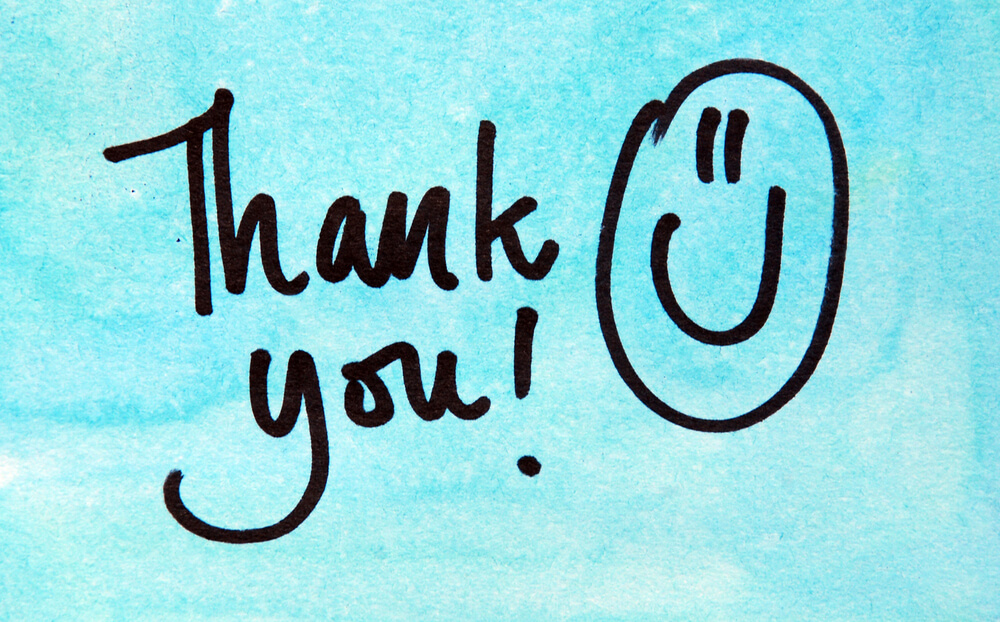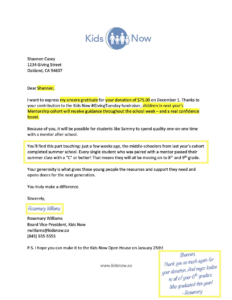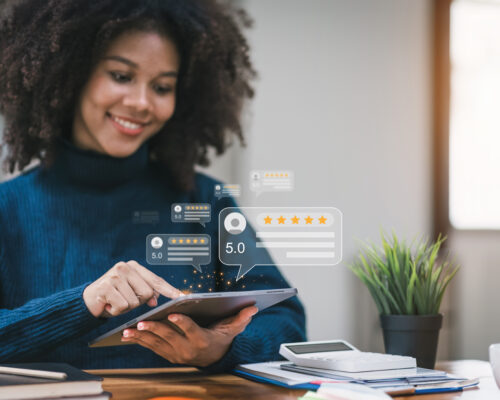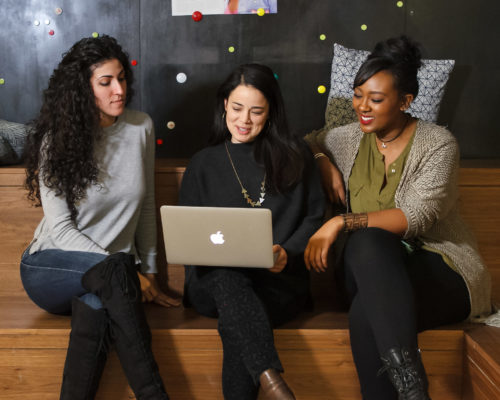Mind your manners
It’s not just about good etiquette—it will make you better at fundraising.
While your friends might not notice your elbows on the table, you donors will certainly notice if you don’t say thank you. Thanking your donors is a key first step in building a lasting relationship. And since retaining and motivating existing donors costs less than acquiring new donors, it’s critical to plan exactly how you’ll give thanks before launching your next fundraising campaign.
To make it easy for you, we’re sharing the must-have elements of a donation thank-you and how you can make your donation thank-you letter great. We’ve even included a thank-you letter template that you can download and customize for your nonprofit.
thank your donors
A GOOD thank-you should include:
- Your donor’s first name (and last if you’d like to be more formal)
- Their donation amount
- An honest expression of your personal gratitude
- How their donation makes a difference
And a great thank-you also includes:
- The word you over and over. Saying thank you is all about making your donor and their generosity the center of attention. Scan your message to see how many times you’ve said “we” or “our organization,” and make sure that there are many more statements about how “You (the donor) have made such a huge difference”
- A story that illustrates your donor’s impact
- A personal signature from the person sending the message
- A handwritten note in the margin
- Ways to get involved with your organization (ideally in the P.S., which many people read first!)
say thank you with:
YOUR Automated Thank-You Message
Generally, the very first message a donor receives after making a contribution online is automated. While the generic “Thank You!” is okay (and better than nothing at all), you don’t want to miss this opportunity to connect with your donor.
Rather than sticking with the automated settings, use this touchpoint to share a more personal message. You can also use the automated message to let your donor know what to expect next. For example:
Thank you for your generous contribution! Your donation will help make it possible for new students to join the Kids Now Mentorship Program. Look for a donation receipt in your inbox along with more information about how your donation is making a difference.
With Gratitude, The Kids Now Team
and a donation Thank-You Letter
You’ll also want to send a longer thank-you letter to your donors. Sending this letter to offline donors is an absolute must and also a great follow-up to your custom online donation message. You can send your thank-you letter via snail mail (if you have your donor’s mailing address) or as an email (or email attachment).
So you know: this thank-you letter isn’t meant as a donation receipt for tax purposes! It’s a nice gesture to make your donors feel good.
Your thank-you letter should be donor-focused. This is your chance to make them feel special and appreciated: express your gratitude and emphasize their impact.
Below is an example of a thank-you letter for an online fundraising campaign. You can see how the elements of a good letter come together: the donor’s first name, a genuine expression of gratitude, their donation amount, and a short story about how their contribution makes a difference.
There are also some special touches that make this thank-you letter great: the word you/your is included 9 times and it tells a short story that illustrates the donor’s impact. The person writing the letter added their signature and a personal note to the donor (which can also be done with a digital scan if you plan to send it online). Plus, there’s a P.S. that lets the donor know about an upcoming event.
You can use this example for inspiration or simply download the thank-you letter template and customize it with your own information.
Go above and beyond with:
Handwritten Thank-You Cards
There’s nothing quite like getting a handwritten card in the mail. If you really want to make your donors feel special, send them a notecard and a short, personal message! While you might not be able to send cards to each individual donor, it’s worth having some cards around the office to send out when you receive larger donations. A storebought thank-you card will do just fine; you can also make your own online and have them printed with your organization’s logo for a relatively affordable price.
or EVEN A Thank-You Video
Your donors will love to see firsthand how their contributions make a difference. It doesn’t have to be a huge production, and you can share the video in an email or type the link in your thank-you letter—P.S. There’s a special video just for you at yourwebaddress.com/video.
One of our very favorite examples is the thank-you video message from Girls Inc. below:
Their message is personal, heartwarming, and simple. In less than 40 seconds, they bring their cause to life and really show donors how they are making a difference.
If this video gives you all the feels and you’re inspired to make your own, all you really need is a tripod, cell phone + mount, and someone to edit your footage (check out our post on making a better video for your nonprofit to get started).
Conclusion
With so many ways to share your gratitude, the only real mistake you can make is not saying thank you at all. Using the resources we’ve shared, you can plan ahead and have your thank-yous ready to go when donations start rolling in. This small but mighty gesture will help you build stronger relationships with your donors from the beginning—and improve donor retention in the long run.
Do you have any favorite thank-you examples? We’d love to hear your favorite ways to give and receive donation thanks!






Sinead
April 17, 2021Do you have any evidence to suggest that a postal thank you in this day and age is better at generating future donations than an email thank you? Does it still matter or have people moved online
Nathan Dennen
April 19, 2021Hi Sinead, great question! Research suggests that direct mail can be more effective than email when communicating with donors among specific demographics in some instances. For example, including a moving story or relaying program success in a thank you can help increase the likelihood of a repeat donation. In those instances, some donors have preferred to receive that information in a physical letter. If you have the capacity, it’s a tried and true high-touch way to make the donor experience more personal, which can influence their engagement with your organization and potentially inspire them to donate again.